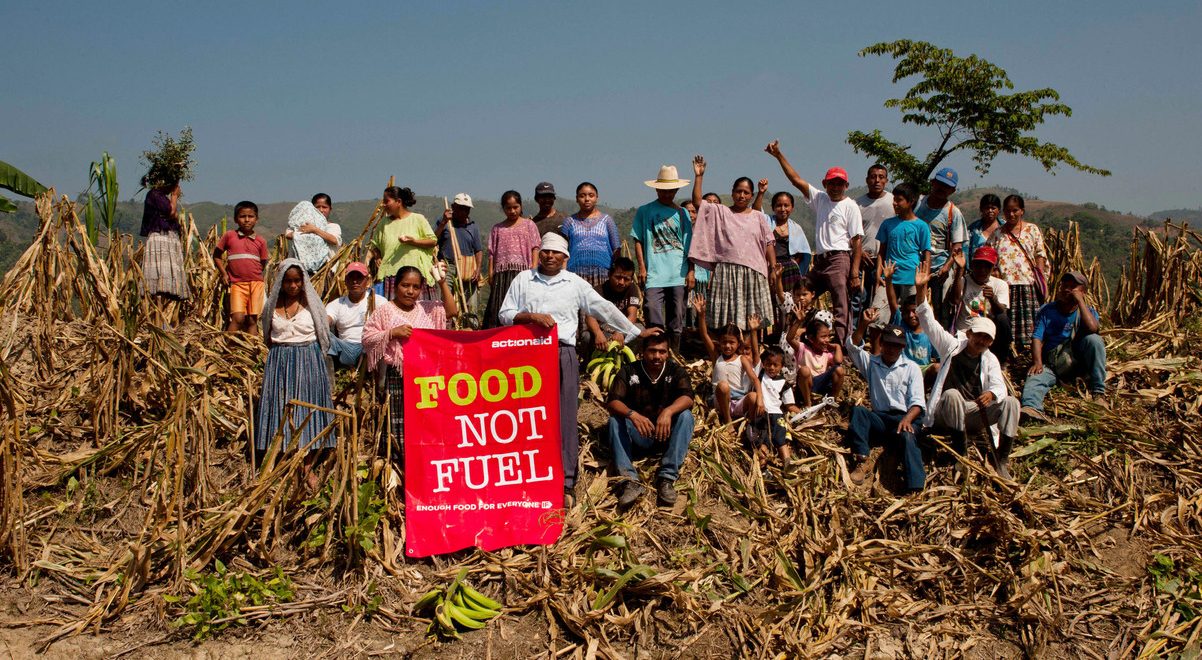Earlier this week our team in Guatemala alerted us to a huge environmental disaster that’s unfolding along the La Pasión River in the north of the country.
According to local sources, the Sayaxché region was put on red alert on June 11 when a pesticide called ‘Malathion’ was discovered in the river.
To date, the contamination has spread to a stretch of the river covering more than 60 miles and photos in local newspapers have revealed thousands of dead fish floating in the river. Hundreds of fishing families have already been affected by this environmental crisis and are facing loss of income and having to buy their food elsewhere.
The source of the leak has been traced by the Guatemalan government to a palm oil plant in Sayaxché, further damaging the environmental credentials of a product that is widely used in both food and non-food industries.
The palm oil takeover
In recent years, palm oil has found its way into a wide variety of everyday products – often without us really noticing.
Chances are, the shampoo you used this morning, the lipstick you put on before going to the office or the pizza you had for lunch, contained palm oil.
In fact, global demand for biofuels is set to increase to 240 million tons by 2050, meaning that this industry will continue to expand, with more cases like this one in Guatemala likely.
This expansion brings with it a whole host of problems. Take Indonesia for example, where large areas of some of the world’s most important forest areas are being destroyed, to make way for palm oil plantations. Even though this destruction is illegal, little is being done to stop it.
But it’s not only everyday supermarket products that palm oil has found its way into, it’s also in our gas tanks. Biodiesel is being used as a transport fuel, and under new targets announced by the U.S. Environmental Protection Agency, our use of biodiesel is set to expand.
“Green myth”
On the surface this may seem a good thing. Palm oil producers will tell you that biodiesel will reduce emissions when compared to standard gasoline. Unfortunately, this is simply not true.
Much of the forest area in countries like Indonesia has been there for a very long time and has tons of carbon dioxide stored in it. Destroying the rainforest releases all of this carbon dioxide into the atmosphere, especially as the most common method of doing so is burning.
But it’s not only the environmental credentials of palm oil that are being called into question. As production soars, demand for land goes up with it, putting at risk the poor farmers that rely on this land for small scale sustainable farming.
Land grabbing in Indonesia is well documented and dates back many years, but it is also impacting other countries such as Guatemala where local farmers have been forced off their land, sometimes by gangs of armed groups, and replaced by plantations producing palm oil and other biofuels.
The pesticide that was found in the La Pasión River is widely used here in the United States to control the spread of bugs in agriculture. Malathion is also used in some shampoos to get rid of head lice. But it has been recently classified by the World Health Organization as “probably carcinogenic to humans” and, when it gets into our rivers and streams, can be highly toxic, as this case in Guatemala clearly shows.
The lack of environmental controls governing the palm oil industry in Guatemala and around the world is very worrying.
That’s one of the reasons why here in the U.S. ActionAid is calling for biofuels mandates to be scrapped and for increased investment in smallholder farmers in poor countries around the world.
These are the farmers who have lived and worked their land for many years, and know how to protect it for future generations, but are often shoved aside in Guatemala and elsewhere to make way for big plantations.



